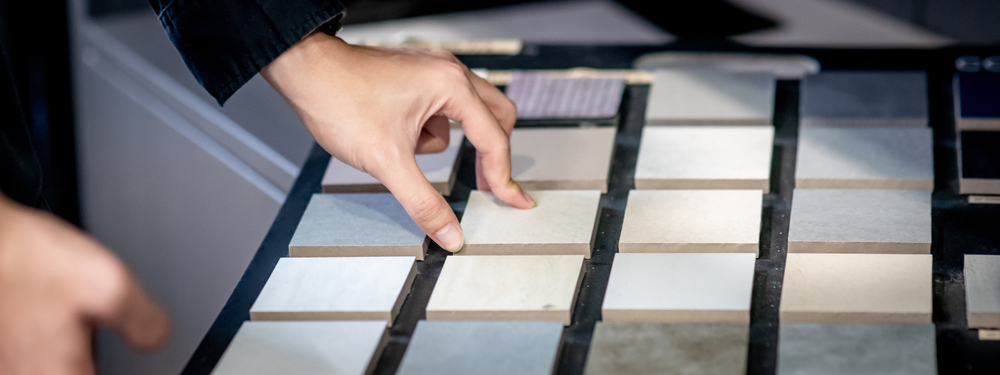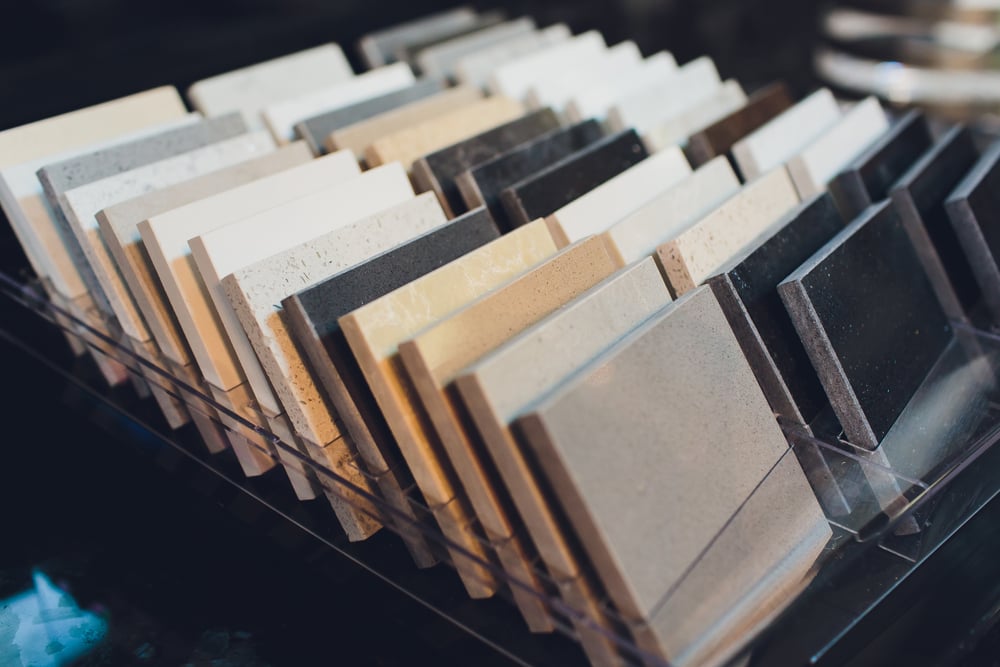While they look like two peas in a pod, ceramic and porcelain tiles are not the same. It also doesn’t help that people use the terms ‘ceramic tiles’ and ‘porcelain tiles’ interchangeably.
The differences between the two are minute yet can be instrumental, starting with construction and continuing to characteristics – and sometimes even beyond. For this reason, we have carried out a details ceramic vs porcelain tiles comparison so that you can make a well-rounded choice.
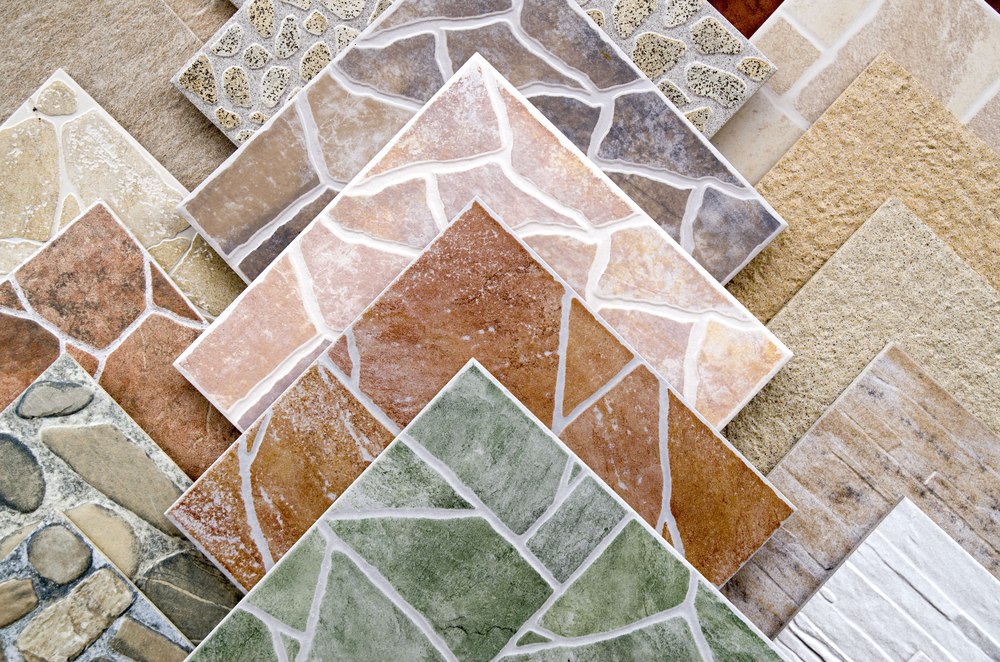
What You Need to Know About Ceramic Tiles
Ceramic tiles are made using red, brown, and white clay, which is kiln-fired at low temperatures. As a result, these are more porous, less dense, and softer. The clay used in ceramic tiles is a lot less refined than that used in porcelain tiles, which makes it more affordable but somewhat less durable.
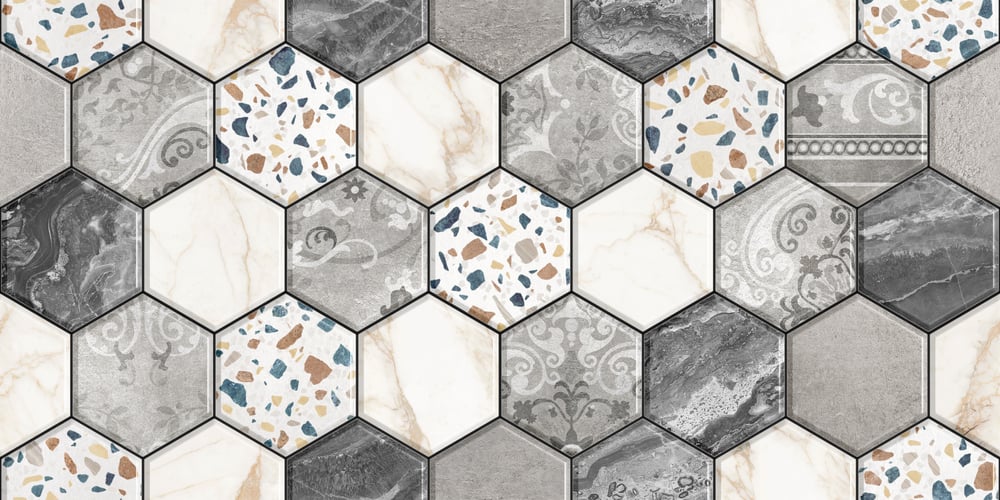
Ceramic tiles are widely used as flooring, especially in houses located in warm climates, where the cooling effect of the tiles is a welcome relief from the sun.
Advantages and Disadvantages of Ceramic Tiles
Let’s quickly go over the pros and cons of ceramic tiles:
| Advantages | Disadvantages |
| Highly durable and long-lasting | Unsuitable for outdoors or places with heavy traffic |
| Unglazed tiles offer a natural look and feel | Can be cold and uncomfortable |
| Resistant to heat, water, and stains | Heavy and prone to chipping and breaking |
| Design flexibility as they can add depth and dimension to the room | Grout requires periodic sealing or else moisture will seep in |
| Easy to maintain |
What You Need to Know About Porcelain Tiles
Porcelain tiles are, in a way, a subtype of ceramic tiles made with white clay, sand, and feldspar. These tiles are kiln-fired at very high temperatures and for longer durations, which seals in the natural look while granting it stone-like durability. Homeowners can choose between unglazed, glazed, and full-bodied tiles depending on the decor requirements.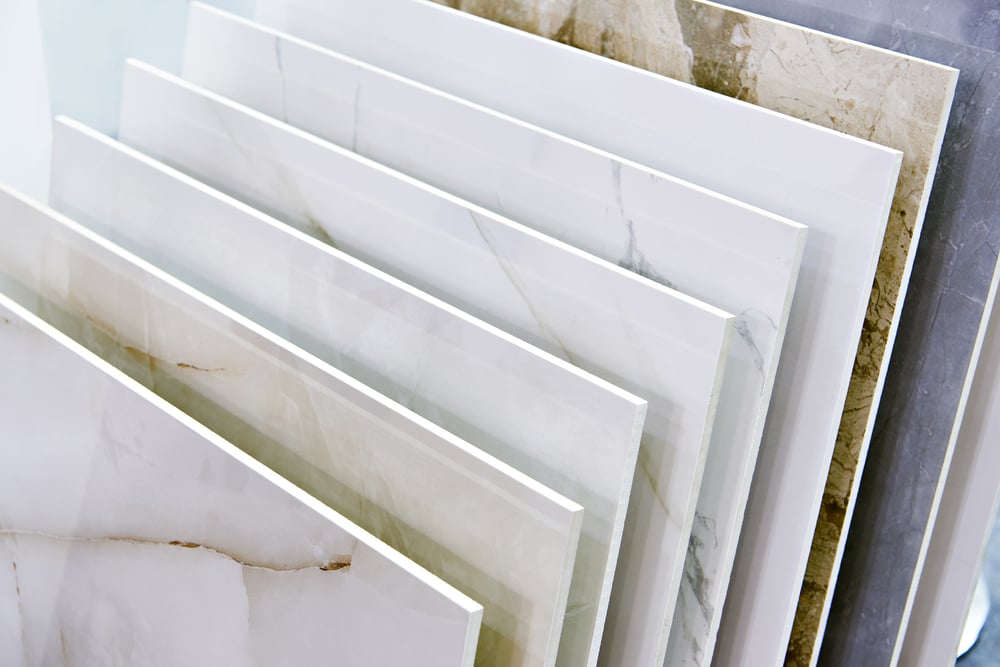
Advantages and Disadvantages of Porcelain Tiles
Here is a quick overview of the pros and cons of porcelain tiles:
| Advantages | Disadvantages |
| Variety of design options available | Much more expensive |
| Long-term durability due to through-body composition | Heavy and brittle, which makes installation tricky |
| Highly water and heat resistant | Slippery and hard underfoot |
| Resistance to staining | Cost of installation is high |
| Ease of maintenance |
Ceramic vs Porcelain Tiles: Key Similarities and Differences
The similarities and differences when it comes to ceramic vs porcelain, in terms of properties like material, cost, uses, maintenance, durability, etc. are tabulated below:
| Ceramic Tiles | Porcelain Tiles | |
| Composition | Coarse clay | Fine kaolin clay |
| Density | Low | High |
| Cost | Cheaper. They cost around Rs. 30/- to 65/- per square feet | More expensive. On average, these cost Rs. 65/- to 70/- per square feet |
| Uses | Suitable only for interior uses like:
|
Suited for interior and exterior uses like:
|
| Appearance | Often solid coloured | Come in various colours, designs, patterns, and textures, and can also mimic natural stones and wood grains |
| Water Absorption | More susceptible to moisture infiltration due to the unglazed backing, which ups water absorption from 0.5% | More impervious to water intrusion with water absorption less than or equal to 0.5% |
| Heat Resistance | Highly resistant to heat | Highly resistant to heat |
| Maintenance | Can be cleaned with a damp cloth or mop and a mild soap solution | Can be cleaned with a damp cloth or mop and a mild soap solution |
| Durability | The heterogeneous composition and lower density clay make them more prone to cracking, chipping and breaking | Being solid throughout, they are harder and long-lasting |
| Ease of Cutting | Does not require exceptional skill, expertise, or tools to cut, which simplifies the installation | Often requires an experienced tile-setter for cutting and installation |
Ceramic vs Porcelain Tiles: How to Tell Them Apart?
Ideally, the packaging of the tiles would indicate whether it is ceramic or porcelain. However, you can also use the following litmus test to differentiate between the two:
- Porcelain tiles have a consistent colour through and through. Even broken or chipped porcelain tiles will have uniform colour across the cross-section. On the other hand, ceramic tiles have glazed surface colouring, beneath which you might find different colours.
- Porcelain tiles have a smoother finish than ceramic tiles – even if it is the unglazed surface that is in question. Porcelain tiles will have a smoother texture, while ceramic tiles will feel coarse.
- Porcelain tiles are denser, which makes them heavier than ceramic tiles.
Ceramic vs Porcelain Tiles: Which Ones Are Right for You?
As seen above, the difference when it comes to ceramic vs porcelain tiles can be critical depending on the application. Thus, it is best to get the full picture before deciding between the two. To cut a long story short, use porcelain tiles for interior and exterior uses where moisture levels would be high. On the other hand, use ceramic tiles for a cheaper fix for low-traffic areas.
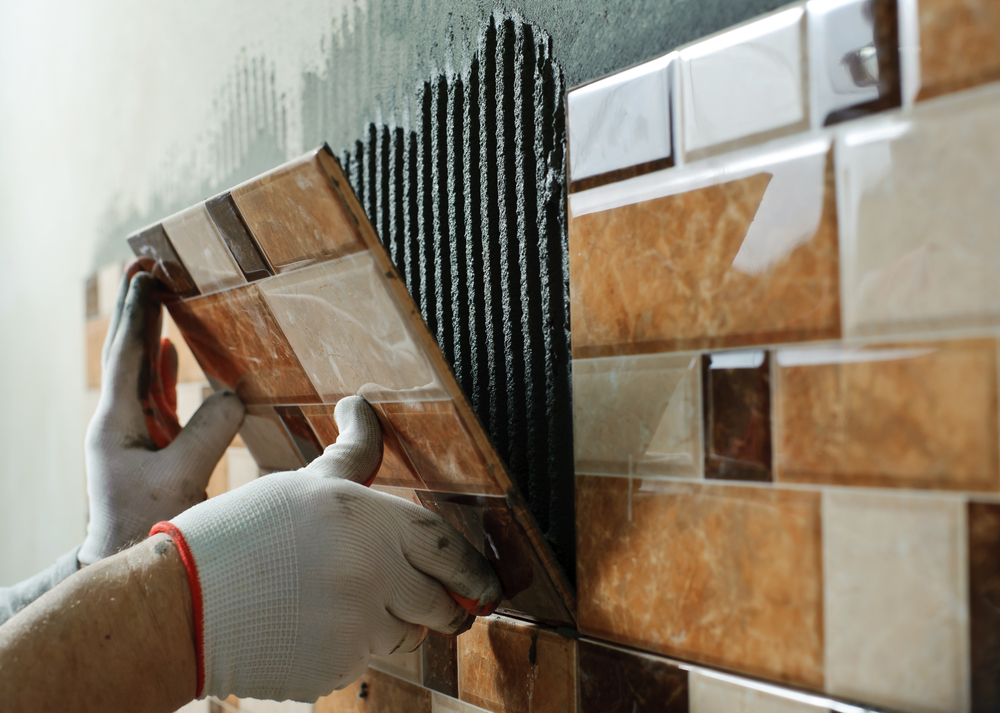
Both are easy to maintain and as long as you reseal the tiles periodically by cleaning and replacing the grout, they will offer you long-term durability. Check out the HomeLane blog for more tips and tricks on how to make your house a home.

